
Joseph Mallord William Turner Painting Reproductions 1 of 14
1775-1851
English Romanticism Painter
Rain lashed the city the day Joseph Mallord William Turner was laid to rest beneath the dome of St Paul’s Cathedral. The light that obsessed him, that he chased across skies and seas for over sixty years, had finally faded. A son of Covent Garden, born into the noise of London’s markets in 1775, Turner rose from humble beginnings to become the most radical landscape painter of his age - and one of the most enduring figures in the history of Western art.
Raised in modest circumstances by a barber father and a mentally troubled mother, Turner’s childhood was marked by emotional turbulence and early independence. Sent away from London to relatives in Brentford and Margate, he began to sketch the Thames and the Kentish coast. What began as a child’s distraction soon revealed itself as a prodigious gift. At 14, he entered the Royal Academy of Arts. A year later, in 1790, he exhibited for the first time. London’s art world had taken notice.
In these formative years, Turner absorbed a pragmatic education. He learned architectural draftsmanship, studied under topographical artists, and honed his skill through commissions and hand-coloured prints. Even as a teenager, he was selling watercolours from his father’s barber shop window. The precision of these early works, often studies of ruins and abbeys, reflected the prevailing tastes of the time. But behind the measured lines was a restless imagination, one that would soon push against convention.
By the late 1790s, Turner was beginning to break free. "Fishermen at Sea" (1796), his first oil painting exhibited at the Royal Academy, hinted at the power that would define his mature style: turbulent seascapes, spectral light, and a near-mystical vision of nature’s grandeur. Travel broadened his palette. In 1802 he crossed the Channel to study the Old Masters in the Louvre and to explore Switzerland. His sketchbooks - often filled obsessively - recorded not only Alpine vistas, but the changing moods of weather and light.
Turner was a solitary figure by nature, but he was not without support. He enjoyed the patronage of Walter Fawkes at Farnley Hall and George Wyndham at Petworth, where he painted some of his most atmospheric landscapes. His social eccentricities, however, deepened over time. Following the death of his father in 1829, with whom he had lived for decades, Turner grew increasingly reclusive. He never married, though he fathered two daughters with Sarah Danby, and later lived incognito with Sophia Caroline Booth in Chelsea, assuming the name "Mr Booth".
His artistic trajectory bent further toward the sublime. Paintings like "Snow Storm: Hannibal and his Army Crossing the Alps" (1812) and "The Slave Ship" (1840) displayed a fierce energy: swirling compositions, radiant color, and a near-dissolution of form. Critics derided many of these late works as incoherent, but others - notably the young John Ruskin - hailed them as visionary. Indeed, Turner seemed less concerned with topographical accuracy than with capturing nature’s raw, mercurial temperament.
Turner’s technique evolved continually. He layered glazes, experimented with new pigments (some fugitive), and brought the transparency of watercolour into his oil painting. Works like "Rain, Steam and Speed – The Great Western Railway" (1844) pushed toward abstraction, their subjects dissolving into mist and motion. In them, one senses an artist consumed with light - not as illumination, but as substance itself.
Though hailed in some circles, Turner remained controversial in his lifetime. He was often secretive, difficult, and protective of his methods. He opened his own gallery, lectured as Professor of Perspective at the Royal Academy, and created the monumental print series "Liber Studiorum" to elevate the status of landscape. Yet as he aged, he withdrew more into private obsessions, his home neglected, his public appearances sporadic.
He died in 1851 at the age of 76, succumbing to cholera in his modest Chelsea lodgings. His passing marked the end of an era, yet Turner’s influence had only just begun. He bequeathed over 30,000 works to the British nation, along with a substantial estate, although legal wrangling diluted his wishes. Many of his paintings now reside in Tate Britain’s Clore Gallery, though his desire for them to remain together was never fully realized.
Today, Joseph Mallord William Turner stands not merely as an English Romantic painter, but as a pivotal figure in the evolution of modern art. His fearless experiments with colour and form anticipated Impressionism and even abstraction. Claude Monet studied him closely. So did Mark Rothko. The fighting ships, the storms, the sunbeams breaking through fog - all these continue to pulse with energy. Turner did not simply paint landscapes. He painted vision itself.
Raised in modest circumstances by a barber father and a mentally troubled mother, Turner’s childhood was marked by emotional turbulence and early independence. Sent away from London to relatives in Brentford and Margate, he began to sketch the Thames and the Kentish coast. What began as a child’s distraction soon revealed itself as a prodigious gift. At 14, he entered the Royal Academy of Arts. A year later, in 1790, he exhibited for the first time. London’s art world had taken notice.
In these formative years, Turner absorbed a pragmatic education. He learned architectural draftsmanship, studied under topographical artists, and honed his skill through commissions and hand-coloured prints. Even as a teenager, he was selling watercolours from his father’s barber shop window. The precision of these early works, often studies of ruins and abbeys, reflected the prevailing tastes of the time. But behind the measured lines was a restless imagination, one that would soon push against convention.
By the late 1790s, Turner was beginning to break free. "Fishermen at Sea" (1796), his first oil painting exhibited at the Royal Academy, hinted at the power that would define his mature style: turbulent seascapes, spectral light, and a near-mystical vision of nature’s grandeur. Travel broadened his palette. In 1802 he crossed the Channel to study the Old Masters in the Louvre and to explore Switzerland. His sketchbooks - often filled obsessively - recorded not only Alpine vistas, but the changing moods of weather and light.
Turner was a solitary figure by nature, but he was not without support. He enjoyed the patronage of Walter Fawkes at Farnley Hall and George Wyndham at Petworth, where he painted some of his most atmospheric landscapes. His social eccentricities, however, deepened over time. Following the death of his father in 1829, with whom he had lived for decades, Turner grew increasingly reclusive. He never married, though he fathered two daughters with Sarah Danby, and later lived incognito with Sophia Caroline Booth in Chelsea, assuming the name "Mr Booth".
His artistic trajectory bent further toward the sublime. Paintings like "Snow Storm: Hannibal and his Army Crossing the Alps" (1812) and "The Slave Ship" (1840) displayed a fierce energy: swirling compositions, radiant color, and a near-dissolution of form. Critics derided many of these late works as incoherent, but others - notably the young John Ruskin - hailed them as visionary. Indeed, Turner seemed less concerned with topographical accuracy than with capturing nature’s raw, mercurial temperament.
Turner’s technique evolved continually. He layered glazes, experimented with new pigments (some fugitive), and brought the transparency of watercolour into his oil painting. Works like "Rain, Steam and Speed – The Great Western Railway" (1844) pushed toward abstraction, their subjects dissolving into mist and motion. In them, one senses an artist consumed with light - not as illumination, but as substance itself.
Though hailed in some circles, Turner remained controversial in his lifetime. He was often secretive, difficult, and protective of his methods. He opened his own gallery, lectured as Professor of Perspective at the Royal Academy, and created the monumental print series "Liber Studiorum" to elevate the status of landscape. Yet as he aged, he withdrew more into private obsessions, his home neglected, his public appearances sporadic.
He died in 1851 at the age of 76, succumbing to cholera in his modest Chelsea lodgings. His passing marked the end of an era, yet Turner’s influence had only just begun. He bequeathed over 30,000 works to the British nation, along with a substantial estate, although legal wrangling diluted his wishes. Many of his paintings now reside in Tate Britain’s Clore Gallery, though his desire for them to remain together was never fully realized.
Today, Joseph Mallord William Turner stands not merely as an English Romantic painter, but as a pivotal figure in the evolution of modern art. His fearless experiments with colour and form anticipated Impressionism and even abstraction. Claude Monet studied him closely. So did Mark Rothko. The fighting ships, the storms, the sunbeams breaking through fog - all these continue to pulse with energy. Turner did not simply paint landscapes. He painted vision itself.
323 J. M. W. Turner Paintings
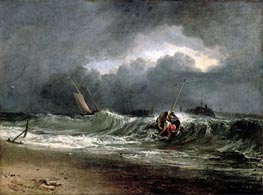
Fishermen upon a Lee-Shore in Squally Weather n.d.
Oil Painting
$1368
$1368
Canvas Print
$69.41
$69.41
SKU: TJW-5606
Joseph Mallord William Turner
Original Size: 91.5 x 122 cm
City Art Gallery, Southampton, UK
Joseph Mallord William Turner
Original Size: 91.5 x 122 cm
City Art Gallery, Southampton, UK
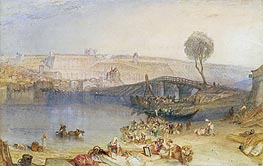
View of the Castle of Saint-Germain-en-Laye n.d.
Canvas Print
$61.88
$61.88
SKU: TJW-14392
Joseph Mallord William Turner
Original Size: 29.9 x 45.7 cm
Louvre Museum, Paris, France
Joseph Mallord William Turner
Original Size: 29.9 x 45.7 cm
Louvre Museum, Paris, France
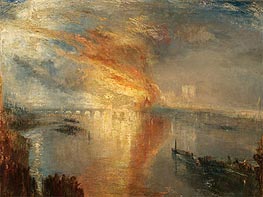
The Burning of the Houses of Lords and Commons, ... 1835
Oil Painting
$1193
$1193
Canvas Print
$69.58
$69.58
SKU: TJW-14393
Joseph Mallord William Turner
Original Size: 92 x 123.2 cm
Cleveland Museum of Art, Ohio, USA
Joseph Mallord William Turner
Original Size: 92 x 123.2 cm
Cleveland Museum of Art, Ohio, USA

Going to the Ball (San Martino) 1846
Oil Painting
$1146
$1146
Canvas Print
$62.41
$62.41
SKU: TJW-14394
Joseph Mallord William Turner
Original Size: 61.6 x 92.4 cm
Tate Gallery, London, UK
Joseph Mallord William Turner
Original Size: 61.6 x 92.4 cm
Tate Gallery, London, UK
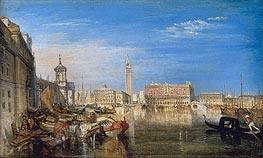
Bridge of Sighs, Ducal Palace and Custom House, Venice 1833
Oil Painting
$1281
$1281
Canvas Print
$61.88
$61.88
SKU: TJW-14395
Joseph Mallord William Turner
Original Size: 51.1 x 81.6 cm
Tate Gallery, London, UK
Joseph Mallord William Turner
Original Size: 51.1 x 81.6 cm
Tate Gallery, London, UK
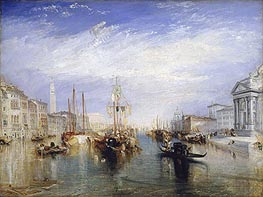
Venice, from the Porch of Madonna della Salute c.1835
Oil Painting
$2358
$2358
Canvas Print
$70.09
$70.09
SKU: TJW-14396
Joseph Mallord William Turner
Original Size: 91.4 x 122.2 cm
Metropolitan Museum of Art, New York, USA
Joseph Mallord William Turner
Original Size: 91.4 x 122.2 cm
Metropolitan Museum of Art, New York, USA

The Whale Ship c.1845
Oil Painting
$1164
$1164
Canvas Print
$69.41
$69.41
SKU: TJW-14397
Joseph Mallord William Turner
Original Size: 91.8 x 122.6 cm
Metropolitan Museum of Art, New York, USA
Joseph Mallord William Turner
Original Size: 91.8 x 122.6 cm
Metropolitan Museum of Art, New York, USA
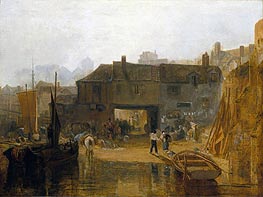
Saltash with the Water Ferry 1811
Oil Painting
$1244
$1244
Canvas Print
$70.09
$70.09
SKU: TJW-14398
Joseph Mallord William Turner
Original Size: 90 x 120.7 cm
Metropolitan Museum of Art, New York, USA
Joseph Mallord William Turner
Original Size: 90 x 120.7 cm
Metropolitan Museum of Art, New York, USA
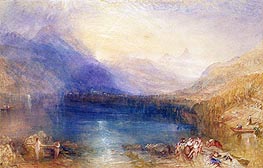
The Lake of Zug 1843
Paper Art Print
$58.61
$58.61
SKU: TJW-14399
Joseph Mallord William Turner
Original Size: 29.8 x 46.6 cm
Metropolitan Museum of Art, New York, USA
Joseph Mallord William Turner
Original Size: 29.8 x 46.6 cm
Metropolitan Museum of Art, New York, USA
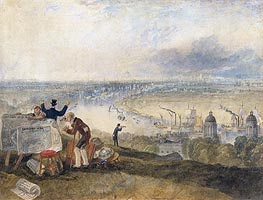
View of London from Greenwich 1825
Paper Art Print
$58.61
$58.61
SKU: TJW-14400
Joseph Mallord William Turner
Original Size: 21.3 x 28 cm
Metropolitan Museum of Art, New York, USA
Joseph Mallord William Turner
Original Size: 21.3 x 28 cm
Metropolitan Museum of Art, New York, USA

Fort of L'Essillon, Val de la Maurienne, France 1836
Paper Art Print
$58.61
$58.61
SKU: TJW-14401
Joseph Mallord William Turner
Original Size: 19.7 x 28 cm
Metropolitan Museum of Art, New York, USA
Joseph Mallord William Turner
Original Size: 19.7 x 28 cm
Metropolitan Museum of Art, New York, USA

The Fighting Temeraire 1839
Oil Painting
$1205
$1205
Canvas Print
$69.92
$69.92
SKU: TJW-14402
Joseph Mallord William Turner
Original Size: 90.7 x 121.6 cm
National Gallery, London, UK
Joseph Mallord William Turner
Original Size: 90.7 x 121.6 cm
National Gallery, London, UK

Rain, Steam and Speed - The Great Western Railway 1844
Oil Painting
$1151
$1151
Canvas Print
$69.92
$69.92
SKU: TJW-14403
Joseph Mallord William Turner
Original Size: 91 x 121.8 cm
National Gallery, London, UK
Joseph Mallord William Turner
Original Size: 91 x 121.8 cm
National Gallery, London, UK
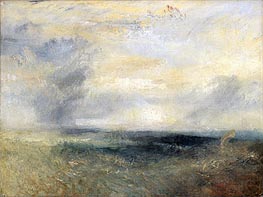
Margate from the Sea c.1835/40
Oil Painting
$1073
$1073
Canvas Print
$69.92
$69.92
SKU: TJW-14404
Joseph Mallord William Turner
Original Size: 91.2 x 122.2 cm
National Gallery, London, UK
Joseph Mallord William Turner
Original Size: 91.2 x 122.2 cm
National Gallery, London, UK

Calais Pier with French Poissards Preparing for ... 1803
Oil Painting
$1735
$1735
Canvas Print
$67.36
$67.36
SKU: TJW-14405
Joseph Mallord William Turner
Original Size: 172 x 240 cm
National Gallery, London, UK
Joseph Mallord William Turner
Original Size: 172 x 240 cm
National Gallery, London, UK
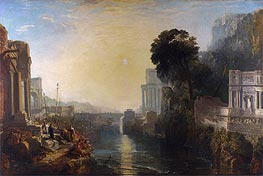
Dido Building Carthage (The Rise of the ... 1815
Oil Painting
$2093
$2093
Canvas Print
$62.75
$62.75
SKU: TJW-14406
Joseph Mallord William Turner
Original Size: 155.5 x 230 cm
National Gallery, London, UK
Joseph Mallord William Turner
Original Size: 155.5 x 230 cm
National Gallery, London, UK
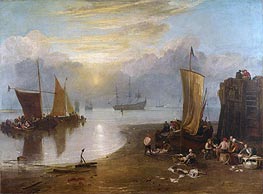
Sun Rising through Vapour: Fishermen Cleaning and ... b.1807
Oil Painting
$2174
$2174
Canvas Print
$69.07
$69.07
SKU: TJW-14407
Joseph Mallord William Turner
Original Size: 134 x 179.5 cm
National Gallery, London, UK
Joseph Mallord William Turner
Original Size: 134 x 179.5 cm
National Gallery, London, UK
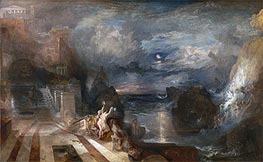
The Parting of Hero and Leander b.1837
Oil Painting
$1623
$1623
Canvas Print
$61.88
$61.88
SKU: TJW-14408
Joseph Mallord William Turner
Original Size: 146 x 236 cm
National Gallery, London, UK
Joseph Mallord William Turner
Original Size: 146 x 236 cm
National Gallery, London, UK
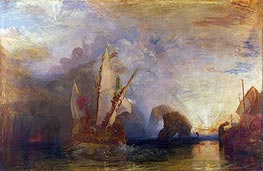
Ulysses Deriding Polyphemus - Homer's Odyssey 1829
Oil Painting
$1748
$1748
Canvas Print
$61.88
$61.88
SKU: TJW-14409
Joseph Mallord William Turner
Original Size: 132.5 x 203 cm
National Gallery, London, UK
Joseph Mallord William Turner
Original Size: 132.5 x 203 cm
National Gallery, London, UK
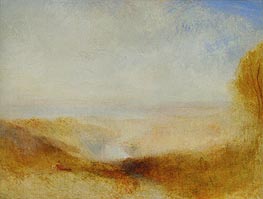
Landscape with River and a Bay in the far Background c.1835
Oil Painting
$1070
$1070
Canvas Print
$70.94
$70.94
SKU: TJW-14410
Joseph Mallord William Turner
Original Size: 94 x 124 cm
Louvre Museum, Paris, France
Joseph Mallord William Turner
Original Size: 94 x 124 cm
Louvre Museum, Paris, France

The Lauerzer See with the Mythens (Lake of Brienz) c.1845/50
Paper Art Print
$58.61
$58.61
SKU: TJW-14411
Joseph Mallord William Turner
Original Size: 36.8 x 54 cm
Victoria and Albert Museum, London, UK
Joseph Mallord William Turner
Original Size: 36.8 x 54 cm
Victoria and Albert Museum, London, UK
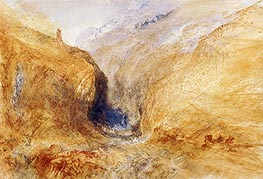
Mountainous Landscape (A Swiss Pass) c.1848/50
Paper Art Print
$58.61
$58.61
SKU: TJW-14412
Joseph Mallord William Turner
Original Size: 35.9 x 50.8 cm
Victoria and Albert Museum, London, UK
Joseph Mallord William Turner
Original Size: 35.9 x 50.8 cm
Victoria and Albert Museum, London, UK
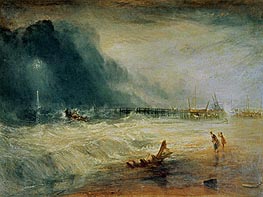
Life-Boat and Manby Apparatus Going Off to a ... c.1831
Oil Painting
$1151
$1151
Canvas Print
$64.74
$64.74
SKU: TJW-14413
Joseph Mallord William Turner
Original Size: 91.4 x 122 cm
Victoria and Albert Museum, London, UK
Joseph Mallord William Turner
Original Size: 91.4 x 122 cm
Victoria and Albert Museum, London, UK
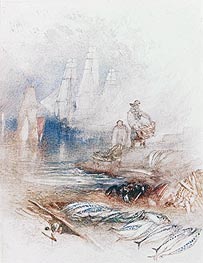
Mackerel on the Beach c.1830/35
Paper Art Print
$58.61
$58.61
SKU: TJW-14414
Joseph Mallord William Turner
Original Size: 20.3 x 15.5 cm
British Museum, London, UK
Joseph Mallord William Turner
Original Size: 20.3 x 15.5 cm
British Museum, London, UK